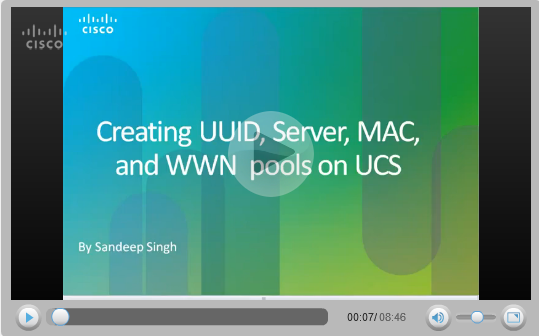Introduction
In Unified Computing system (UCS) the underlying hardware (or server) can be made completely transparent to the OS or applications that run over it. The kind of environment which an OS or application requires can be moved from one server to another or can be changed very easily. This is made possible by moving resources, such as MAC addresses, WWN values, IP addresses, UUID, firmware versions and even server BIOS, from one server to another at the time of deploying the server. This is accomplished by using the concept of Service profiles; which is like software definition of a server. The concept of stateless computing facilitates much greater scalability and can be used in conjunction with virtualization to achieve maximum data center utilization.
Stateless Computing Overview
Various resources responsible to make the stateless nature are:
a) MAC addresses and WWN values: These can be moved form one server to another server as defined in service profile.
b) UUID value: UUID acts like an identity to the server and can be moved from one server to another.
c) Firmware and BIOS revisions: As per requirement, firmware and BIOS versions can be applied to the servers.
As per the application requirements the above values can be changed and so the application can easily run on any of the server blades with the same compatibility. These values can be easily changed using the UCS manager and can be applied to the server before installing the OS or the application.
Video
The following video explains MAC, UUID, WWN pools in detail.

Related Information
What is a Service profile in UCS and what are its types
How the concepts of VLAN and VSAN are implemented in UCS